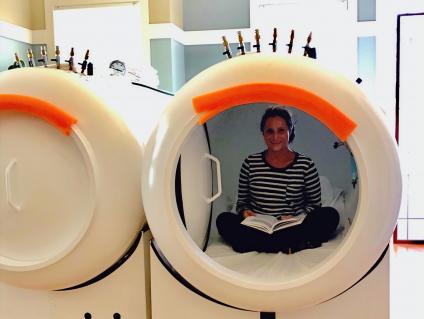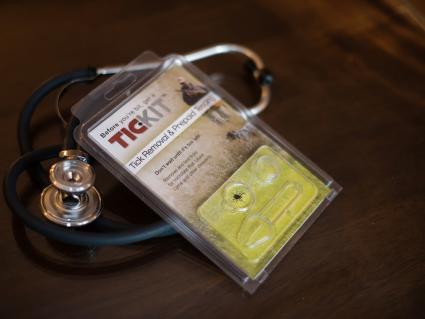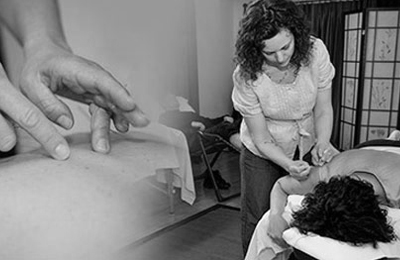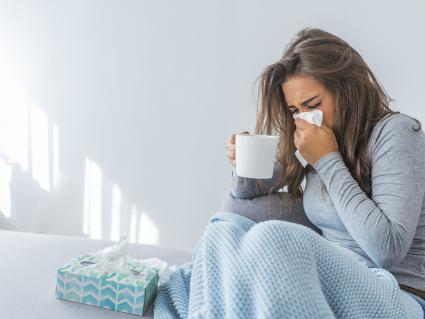How to Recognize and Prevent Lyme Disease

This month is Lyme disease awareness month. As the number of cases continue to increase year after year, one must be knowledgeable about how to recognize and prevent this elusive and challenging disease. Lyme disease is a spirochetal bacterial infection transmitted by deer ticks. In the late 1970s in Lyme, Connecticut, a group of children started having symptoms that included rashes, fevers, and swollen joints. In 1982 a scientist by the name of Wilhelm “Willy” Burgdorfer, found spiral shaped bacteria while investigating deer ticks on Long Island. He then looked at deer ticks in CT and found the same spiral bacteria that are now known as Borrelia Burgdorferi.
How Does Lyme Transmit to Humans?
Deer ticks, the primary vector of Lyme disease, have 4 life stages that occur over 2 years. There is an egg stage and 3 growth stages: larva, nymph, and adult. Eggs will hatch into larva in the fall and larva will feed on animals such as mice, other rodents, and birds over. If these animals are infected with Lyme, then the larva will become infected. The infected larva molt into infected nymphs and will begin to look for their next “blood meal” in the early spring and summer. Most Lyme infections are transmitted to humans and animals during this this stage of feeding. Since nymph ticks are about the size of a poppy seed, they are often times difficult to detect. Feeding times of greater than 24 hours incur higher risks of Lyme infection, but it has been shown that infection can be transmitted with less than 24 hours of attachment. Adult ticks can transmit Lyme, but since they are much larger than nymphs, they are often found and removed in a shorter period of time.
What Happens After you are Bit by a Tick?
After a tick bite, symptoms can develop within several days. If the area of attachment becomes extremely red or swollen, this may be the start of an immune reaction towards bacteria. If a rash develops, it can present as a “bulls-eye” looking rash, or a completely solid red rash. A tick bite and subsequent development of a rash is diagnostic for a Lyme infection and treatment should be initiated immediately. However, if no rash develops, this does not mean an infection has not been transmitted. Multiple studies have shown a great variance in the occurrence of a rash, from as low as 10% and as high as 80%. Therefore, the rash is not the only sign or symptom to look out for. Other symptoms associated with early infection are headaches, joint pain and/or swelling, fatigue, and fevers. Often similar to “flu-like” symptoms,if these symptoms present in late spring, summer, or early fall when the flu virus is not present, then in an endemic area, it is likely a Lyme infection or other tick-borne infection.
What about Prevention? Home remedies.
Ticks tend to be close to the ground, in brush, and taller grass. Commercially available tick tubes can be placed in a perimeter around your yard. Containing specially formulated permethrin soaked cotton, these tubes actually target mice that use the cotton. When ticks feed on the mice, the permethrin is transmitted to the tick, and therefore, the tick is killed. The tubes are considered safe for animals, people, and the environment. It is advised not to make your own tubes, as the permethrin in-store bought tubes is specifically made for this purpose.
What about Prevention? Hiking and camping remedies.
If you frequently go hiking, camping, fishing, or hunting, then you should consider treating your clothes, shoes and gear with permethrin spray. Clothes can be self-treated or even purchased pretreated. Self-treated clothes can last about 6 weeks or through 6 washings. However, purchased pretreated clothes can last even longer. Though permethrin is also used as a shampoo to treat head lice, it is not recommended to use directly on the skin for tick prevention. Natural formulations often include essential oils of neem, lavender, eucalyptus, peppermint, castor, and garlic. Plus, try wearing light colored clothing when you are outside. Considering ticks are dark in color, they would be more visible against lighter colored clothing.
What do I do if I was Bit by a Tick?
Since time of attachment is important in transmitting infection, it is best if the tick can be quickly found and removed. If the tick is attached less than six hours the likelihood of infection is very low, but it is not a zero chance. At 24 hours or more, the risk starts to increase at much higher rates. At 36-48 hours of attachment, an infected tick will very much likely transmit the infection. However, the time of attachment is often unknown. Sometimes it is obvious such as a recent hike or yard work, but other times it may not be as obvious… such as a 4 day backpacking, camping, or hunting trip.
This is why regular tick checks are very important. Check yourself, children, and pets regularly. Ticks can crawl to any location on the body, but tend to like the neck, back of ears, scalp, groin, and legs.
Once removed the tick can be sent in for testing. Currently there is www.tickcheck.com and www.ticknology.org. For a nominal fee, the ticks can be tested for multiple species of Borrelia and several other tick-borne infections such as anaplasmosis and babesiosis. If a tick tests positive, it does not confirm actual infection, as time of attachment is an important determination of possible infection. In certain cases, prophylactic or preventative treatment may be initiated.
In the next blog post that will be available later this month, I will discuss other tick-borne infections, testing, and coinfections!
References:
1)Int J Gen Med. 2015; 8: 1–8.
Published online 2014 Dec 19. doi: 10.2147/IJGM.S73791
PMCID: PMC4278789
PMID: 25565881
Lyme borreliosis: a review of data on transmission time after tick attachment
Michael J Cook
https://www.ncbi.nlm.nih.gov/p...
Related Blog Posts

Disulfiram | An Innovative Treatment for Persistent Lyme
Disulfiram may help arm you in your fight against persistent Lyme.Read the Post

Foods to Help Fight Lyme
Here are some food suggestions for fighting Lyme Disease, and what foods to avoid -- taken directly from Dr. Stram’s PowerPoint presentation to Core Life Eatery’s sold out audience on June 13th in Vestal, NY. We hope this information will help you in your quest to overcome Lyme!Read the Post

Herbal Therapies Can Help Fight Lyme
Using herbal therapies in conjunction with antibiotics can help fight lyme more effectively.Read the Post

Lyme Disease and Hyperbarics | Turning the Corner on Treatment
The healing benefits of Hyperbaric Oxygen Therapy (HBOT) and Lyme.Read the Post

An Interview with Dr. Stram: How Effective are the Current Conventional Treatments for Lyme Disease?
In this interview, we asked the founder of the Stram Center, Dr. Ronald Stram, how effective current antibiotic protocols are in regard to Lyme disease treatment. Dr. Stram has devoted his career to those suffering from chronic illnesses, specifically tick-borne diseases. Since 2003, the Stram Center has served nearly 10,000 patients suffering from Lyme disease all across the globe. Dr. Stram…Read the Post
Related Services

Lyme Disease
Lyme Disease Diagnosis and Treatment in Delmar NY and Burlington VT offices At the Stram Center we vow to continue our education on Lyme Disease research, stay up to date on the most effective testing and all the safe available therapies. Moreover, our years of experience in treating patients according to the whole person-integrative medicine approach allows us the most effective way to care…Lyme Disease





















